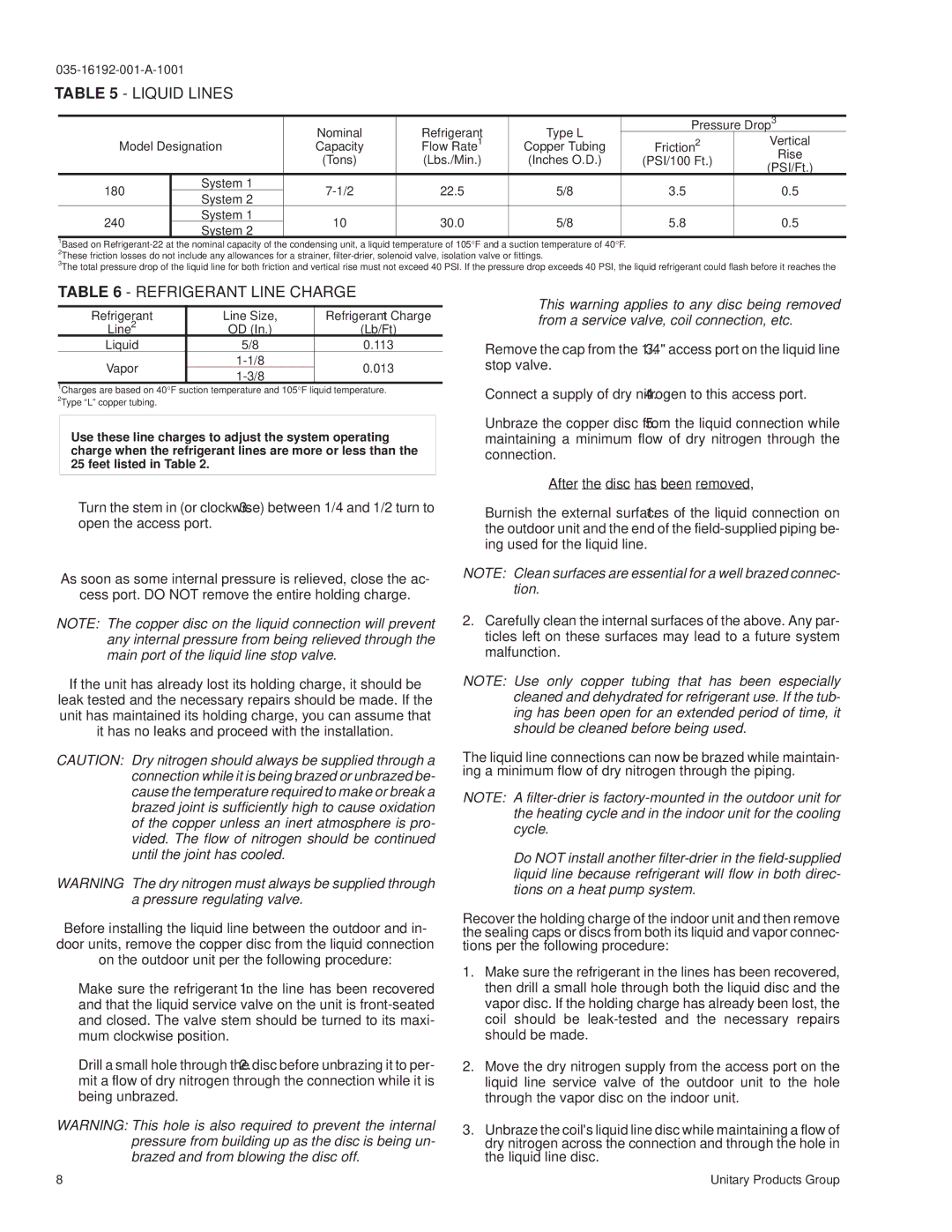E1FB240, E1FB180 specifications
The York E1FB180 and E1FB240 are part of York's advanced series of commercial heating and cooling systems, specifically designed to meet the dynamic needs of modern edifices. These models stand out due to their balance of efficiency, reliability, and innovative technology, making them ideal solutions for a myriad of industrial and commercial applications.One of the main features of the York E1FB series is its impressive energy efficiency. Both the E1FB180 and E1FB240 incorporate high-efficiency compressors that significantly reduce electricity consumption while providing optimal performance. This energy efficiency is crucial not only for reducing operational costs but also for ensuring compliance with increasingly stringent environmental regulations.
In terms of technology, the E1FB series utilizes advanced inverter-driven technology. This feature allows the system to adjust its cooling and heating output based on real-time demand, enabling it to operate at varying speeds. Consequently, this results in quieter operation and a reduction in wear and tear on the components, prolonging the lifespan of the equipment.
Moreover, both models possess robust construction to withstand the rigors of commercial environments. They are built using high-quality materials that ensure durability and reliability even in challenging conditions. This is complemented by an array of corrosion-resistant features, making them suitable for installation in diverse geographical locations, including coastal areas where salt and moisture are prevalent.
The York E1FB180 and E1FB240 also come equipped with sophisticated control systems. These smart controls allow for easy integration into building management systems, enabling real-time monitoring and management. This integration facilitates better energy management practices, yielding further operational savings and improved efficiency.
Additionally, the E1FB series incorporates environmentally friendly refrigerants that align with global initiatives for reducing greenhouse gas emissions. This commitment to sustainability is a cornerstone of York’s design philosophy and is increasingly important for businesses seeking to enhance their green credentials.
In summary, the York E1FB180 and E1FB240 are exemplary models that reflect the brand's commitment to efficiency, durability, and advanced technology. Their innovative features make them a preferred choice for businesses looking to invest in reliable HVAC solutions that not only meet but exceed contemporary performance and environmental standards.

